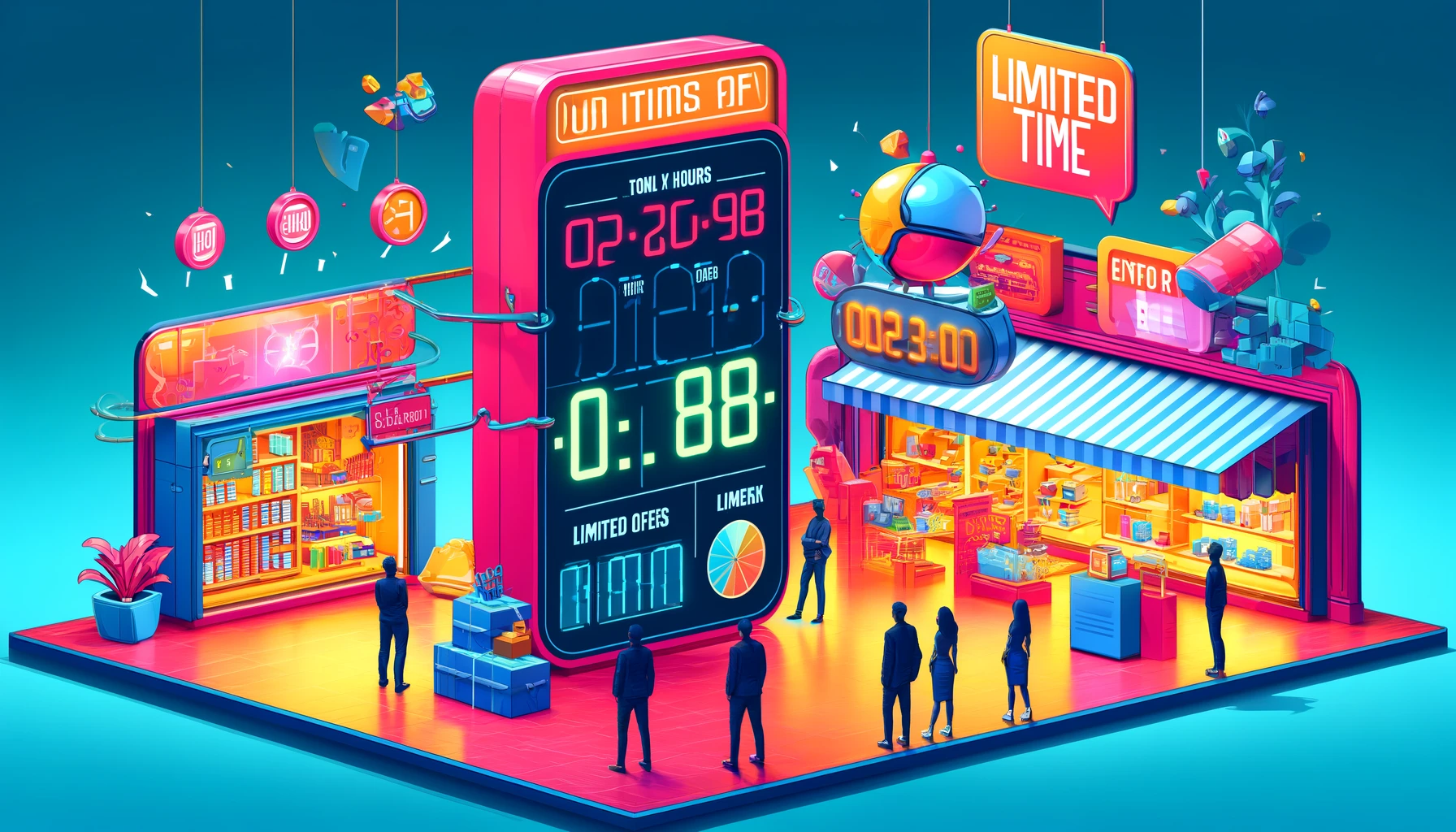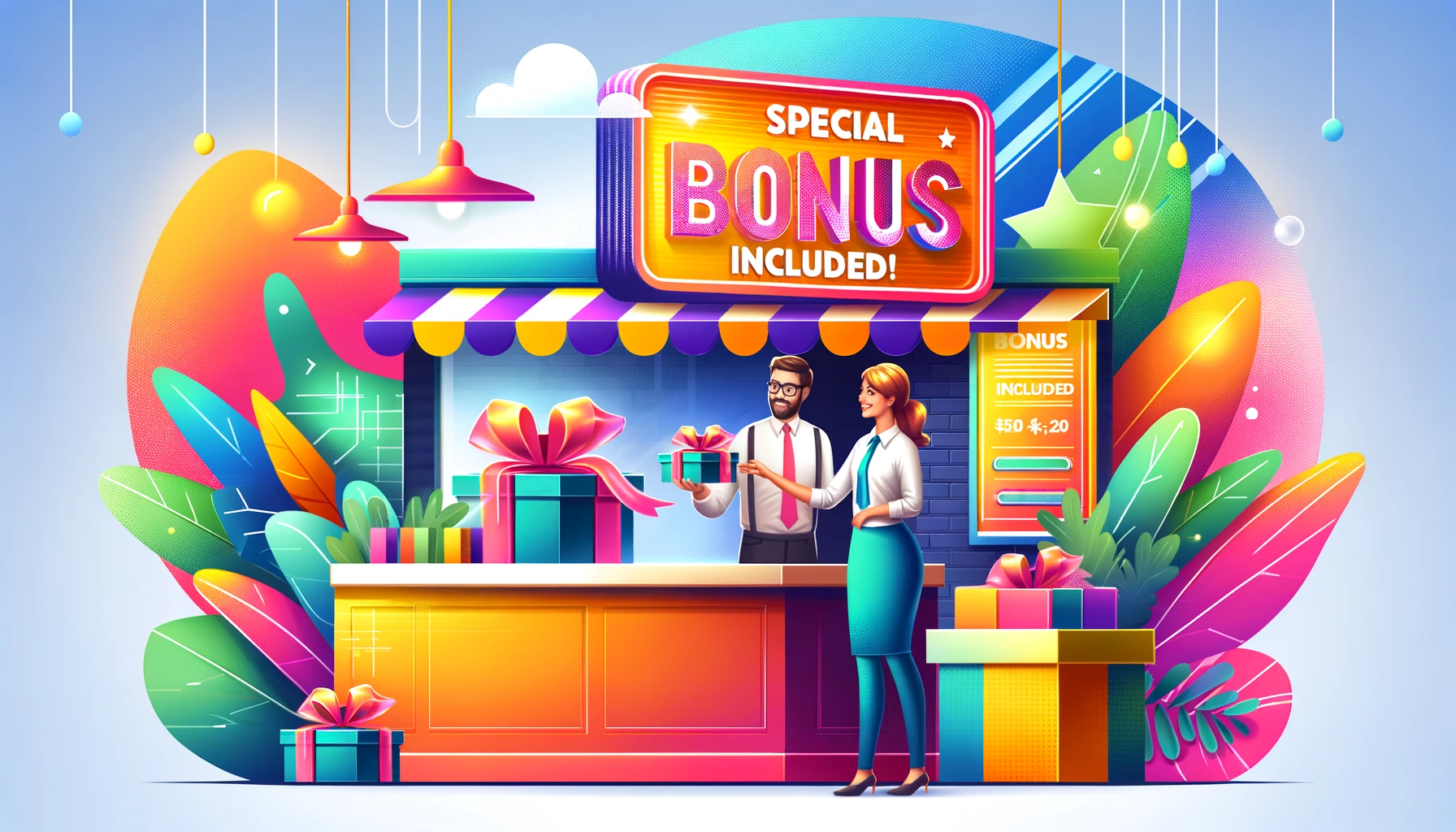Unlock the secrets to Crafting Irresistible Offers that skyrocket conversion rates. Learn essential Offer Creation and Conversion Tactics to transform prospects into loyal customers with our expert tips and strategies.
Key Takeaways:
- Master the Art of Offer Creation: Understand the key elements that make an offer irresistible and how to implement them effectively to drive conversions.
- Leverage Psychological Triggers: Discover how to use psychological triggers like urgency, scarcity, social proof, and authority to enhance the attractiveness of your offers.
- Practical Design Tips: Learn how to design your offers for clarity and impact, making sure they resonate with your target audience.
- Optimize through Testing: Gain insights into how A/B testing and feedback analysis can fine-tune your offers, ensuring they deliver maximum conversion rates.
- Actionable Strategies: Walk away with actionable strategies that can be implemented immediately to improve your offer’s conversion potential.
Table of Contents
Introduction
Have you ever wondered why some offers seem to work like a charm, attracting tons of customers, while others, seemingly similar, flop? The difference often lies not in what is offered but in how it’s presented. Crafting offers that convert requires more than just a good product or service; it requires an understanding of human psychology, a dash of creativity, and a systematic approach to testing and optimization.
In the bustling market today, where consumers are bombarded with choices, your offer needs to stand out and grab attention quickly. This isn’t about deceiving customers but about presenting your product in a way that makes its value undeniable and urgent. Whether you’re a seasoned marketer or a small business owner looking to boost your sales, mastering the art of offer creation is crucial.
In this guide, we will dive deep into the nuances of creating offers that not only catch eyes but also convincingly lead to sales. From the initial design to the final pitch, every element of your offer must be crafted with the specific intent to convert browsers into buyers. Let’s explore how optimized offer creation will make your product or service irresistible to your customers.
Understanding the Basics of Crafting Irresistible Offers
The Importance of Value Perception
Creating an offer that leads to a conversion starts with understanding how your potential customers perceive value. An irresistible offer is one that appears to give more value than it costs. It’s not just about being cheaper or adding more features; it’s about crafting a perception of exceptional value. When customers feel they are getting more out of an offer than they are putting in, the likelihood of them taking action increases significantly.
Crafting Your Offer’s Unique Value Proposition
The core of any successful offer is its unique value proposition (UVP). This is what differentiates your offer from competitors’. It’s crucial to communicate clearly why someone should choose your product or service over others. What can your customers only get from you? Whether it’s superior quality, a unique feature, or an exclusive service, your UVP should be compelling and clear.
Action Steps:
- Identify the key benefits: List the top three benefits of your product or service that directly address the needs or wants of your target audience.
- Highlight what’s unique: Does your offer have a feature or benefit that no competitor can match? Make sure it’s front and center in your marketing materials.
- Speak directly to the customer’s needs: Use language that resonates with your target demographic, focusing on how your offer solves their problems or improves their situation.
Creating offers that effectively convert requires a deep understanding of your target market and the ability to communicate value clearly and compellingly. In the next section, we will explore how integrating psychological triggers into your offer creation can significantly enhance its attractiveness and effectiveness.
Psychological Triggers in Offer Crafting
Effective offer creation often involves tapping into deep-seated psychological triggers. These triggers can significantly influence consumer behavior, nudging potential customers towards making a purchase. Here, we’ll explore some key psychological triggers that can make your offers more compelling.
Urgency and Scarcity
Creating a sense of urgency and scarcity can compel action. This tactic makes the offer seem limited in availability, thereby increasing its perceived value. For example, stating that a special pricing is available “for a limited time only” or that a product is available “while supplies last” can trigger a fear of missing out (FOMO) among potential customers.

Tips for Using Urgency and Scarcity:
- Time-limited offers: Use countdown timers on your website to show when an offer is about to expire.
- Limited quantity available: Inform customers how many items are left in stock to encourage quicker decision-making.
- Exclusive releases: Offer special editions or limited releases that aren’t always available, enhancing the feel of exclusivity.
Social Proof and Authority
People often look to the actions and recommendations of others to make their own decisions. This is where social proof comes into play. Displaying testimonials, reviews, and endorsements can significantly enhance the trustworthiness and attractiveness of your offer.
Strategies for Leveraging Social Proof:
- Customer testimonials: Feature positive reviews prominently on your sales pages.
- Expert endorsements: Get industry experts or well-known personalities to endorse your product.
- User statistics: Show how many people have purchased or subscribed to your product to demonstrate its popularity.
Authority is similarly persuasive, especially when you demonstrate that you are a leader or an expert in your field. This can be achieved through high-quality content, speaking engagements, or being featured in respected publications.
Building Authority:
- Publish thought leadership articles: Write and share articles that address common problems and innovative solutions in your industry.
- Participate in industry discussions: Engage in webinars or panel discussions as an expert.
- Showcase awards and recognitions: If your business has received any awards or special mentions, make sure they are visible to your audience.
By effectively utilizing these psychological triggers, you can enhance the effectiveness of your offers. Next, we will dive into how to design these offers to maximize their impact, ensuring they not only attract but also convert.
Designing Your Offer for Maximum Impact
To convert potential customers into paying ones, the design of your offer must be clear, compelling, and easy to understand. This section will provide strategies for simplifying your offer and using bonuses and incentives effectively to maximize impact.
Simplicity and Clarity in Offer Design
A common mistake in offer creation is over-complication. Your customers should understand exactly what they are getting and what they need to do to get it without any confusion. Simplicity in the design and clarity in the messaging are paramount.
Tips for Ensuring Clarity and Simplicity:
- Use clear, concise language: Avoid jargon and technical terms that might confuse your audience.
- Focus on the benefits: Clearly outline how the offer benefits the user, rather than just describing the features of the product or service.
- Visual aids: Use images, diagrams, or videos to help explain more complex aspects of your offer.
Using Bonuses and Incentives Effectively
Adding bonuses or incentives can significantly enhance the attractiveness of your offer, but they must be relevant and valuable to your target audience. Bonuses should complement the main offer and add perceivable value.

Guidelines for Selecting Effective Bonuses:
- Relevance is key: Choose bonuses that are directly related to the main product or service. For example, if you are selling a photography course, a free camera bag might be a compelling bonus.
- Increase perceived value: Make sure the bonus items or services enhance the overall package’s value without overshadowing the main offer.
- Clearly outline the conditions: If your bonus or incentive requires certain conditions to be met, state these clearly to avoid customer dissatisfaction.
Call to Action (CTA)
A strong call to action is crucial for converting interest into action. Your CTA should be bold, direct, and easy to find.
Effective CTA Techniques:
- Be specific and direct: Use action-oriented language that tells customers exactly what to do, such as “Buy now” or “Sign up today.”
- Create a sense of urgency: Remind customers of the scarcity or time limitation associated with the offer.
- Positioning: Ensure that your CTA is prominently placed and appears multiple times across your landing pages and marketing materials.
By focusing on these elements, you can design offers that not only capture attention but also drive action. In the following section, we will discuss how to test and optimize these offers to ensure they achieve the desired results.
Testing and Optimizing Your Offers
After designing your offer, the next crucial step is to test and optimize it based on real customer feedback and behavior. This process helps you refine the offer to maximize conversions. Here’s how to systematically approach testing and continually improve your offers.
A/B Testing Your Offers
A/B testing, or split testing, involves comparing two versions of your offer to see which one performs better. This could involve testing different headlines, price points, bonus offers, or even the design elements of your marketing materials.
Steps for Effective A/B Testing:
- Choose one variable to test at a time: To determine which element affects performance, change only one aspect between the two versions.
- Use sufficient sample sizes: Ensure that you have a large enough audience to get statistically significant results.
- Measure the right metrics: Focus on metrics that directly relate to your goals, such as conversion rates, sales numbers, or click-through rates.
Analyzing Feedback and Iterating
Collecting and analyzing feedback from your customers can provide invaluable insights into how your offer is perceived and how it can be improved.
Methods for Collecting Customer Feedback:
- Surveys and questionnaires: After purchase, ask customers to complete a brief survey about their buying experience and satisfaction with the offer.
- Customer interviews: Conduct a few in-depth interviews with customers to get detailed feedback.
- Social media and forums: Monitor social channels and relevant forums to see what customers are saying about your offer.
Iterating Based on Feedback:
- Prioritize changes based on impact: Focus on the feedback that will have the most significant impact on your conversion rates.
- Test changes individually: Use A/B testing for any major changes based on customer feedback to see if they improve performance.
- Keep an ongoing improvement process: Continuously collect and use feedback even after initial optimizations to keep improving the offer.
By systematically testing and optimizing your offers, you can gradually increase their effectiveness and ensure they resonate with your target audience. Constant iteration allows you to adapt to changing customer preferences and market conditions, keeping your offers fresh and relevant.
Conclusion
Crafting irresistible offers is not merely about offering a product or service at a compelling price; it’s about creating a comprehensive, value-packed proposition that speaks directly to the heart of the customer’s needs and desires. The journey from a basic offer to one that irresistibly draws in customers involves a deep understanding of market dynamics, consumer psychology, and continuous optimization.
Throughout this guide, we have explored various facets of crafting offers that convert:
- We started by defining the foundation of any great offer: a strong value perception and a clear, unique value proposition that differentiates your offer from the competition.
- We delved into the psychological triggers such as urgency, scarcity, social proof, and authority, which can significantly amplify the attractiveness of your offers.
- We discussed the importance of simplicity and clarity in your offer design and the strategic use of bonuses and incentives to enhance perceived value.
- Finally, we covered the critical role of testing and optimizing your offers, using A/B testing and feedback analysis to refine and perfect your approach.
By implementing these strategies, you can build offers that not only attract attention but also drive meaningful engagement and conversions. The goal is to make your offers so aligned with your customers’ desires and so packed with undeniable value that they feel compelled to act immediately.
Moving Forward
As you move forward, remember that the landscape of consumer behavior is always evolving. What works today might not work tomorrow, so it’s essential to keep learning, testing, and adapting. Listen to your customers, stay flexible in your strategies, and continue to innovate in how you package and present your offers.
Take Action: Review your current offers using the insights from this guide. Identify areas for improvement and plan an A/B test to see what changes might improve your conversion tactics. Always aim for clear, compelling, and customer-focused offers that make a real difference in people’s lives.
Crafting irresistible offers is both an art and a science. By focusing on these principles, you equip your business with the tools needed to thrive in a competitive market and to turn prospects into loyal customers.
Are you ready to transform your business with high-converting offers? Start today by reviewing your current strategies and incorporating these actionable insights. Share your success stories or questions in the comments below, and let’s discuss how to take your offers to the next level!
FAQs
1. What is the most important element in crafting irresistible offers?
- The most crucial element is the value proposition. Your offer must clearly articulate why it’s valuable and how it solves a problem or meets a need better than competitors do. Ensuring the offer is perceived as high value compared to its cost is fundamental.
2. How do I determine the right incentives to include with my offer?
- Incentives should be relevant and complementary to the main offer, enhancing the perceived value. Consider what additional benefits will resonate with your target audience and test different incentives to see which ones perform best in terms of conversion tactics.
3. Can urgency and scarcity tactics backfire?
- Yes, if used inappropriately, these tactics can come off as manipulative. It’s essential to use urgency and scarcity honestly and transparently, ensuring they are true to the nature of the offer. For instance, if a product is genuinely limited in quantity, highlighting this fact can drive action effectively.
4. How often should I change or update my offers?
- Offers should be evaluated and potentially updated based on customer feedback, market trends, and the overall performance of the campaign. Regular testing and updates can help keep the offer fresh and aligned with what the market seeks.
5. What are some common pitfalls in offer creation and how can I avoid them?
- Common pitfalls include making the offer too complex, failing to clearly communicate the benefits, and not aligning the offer with the target audience’s actual needs. Avoid these by maintaining simplicity, focusing on clear communication, and continuously gathering and applying customer insights.
6. How do I measure the success of my offers?
- Success can be measured through various metrics such as conversion rates, sales volume, customer acquisition costs, and overall return on investment (ROI). Setting clear KPIs (Key Performance Indicators) before launching an offer and regularly tracking these metrics will help assess its effectiveness.
If you have more questions or need specific advice on creating your offers, feel free to ask in the comments below. Let’s learn from each other and build offers that truly convert!

